BamX
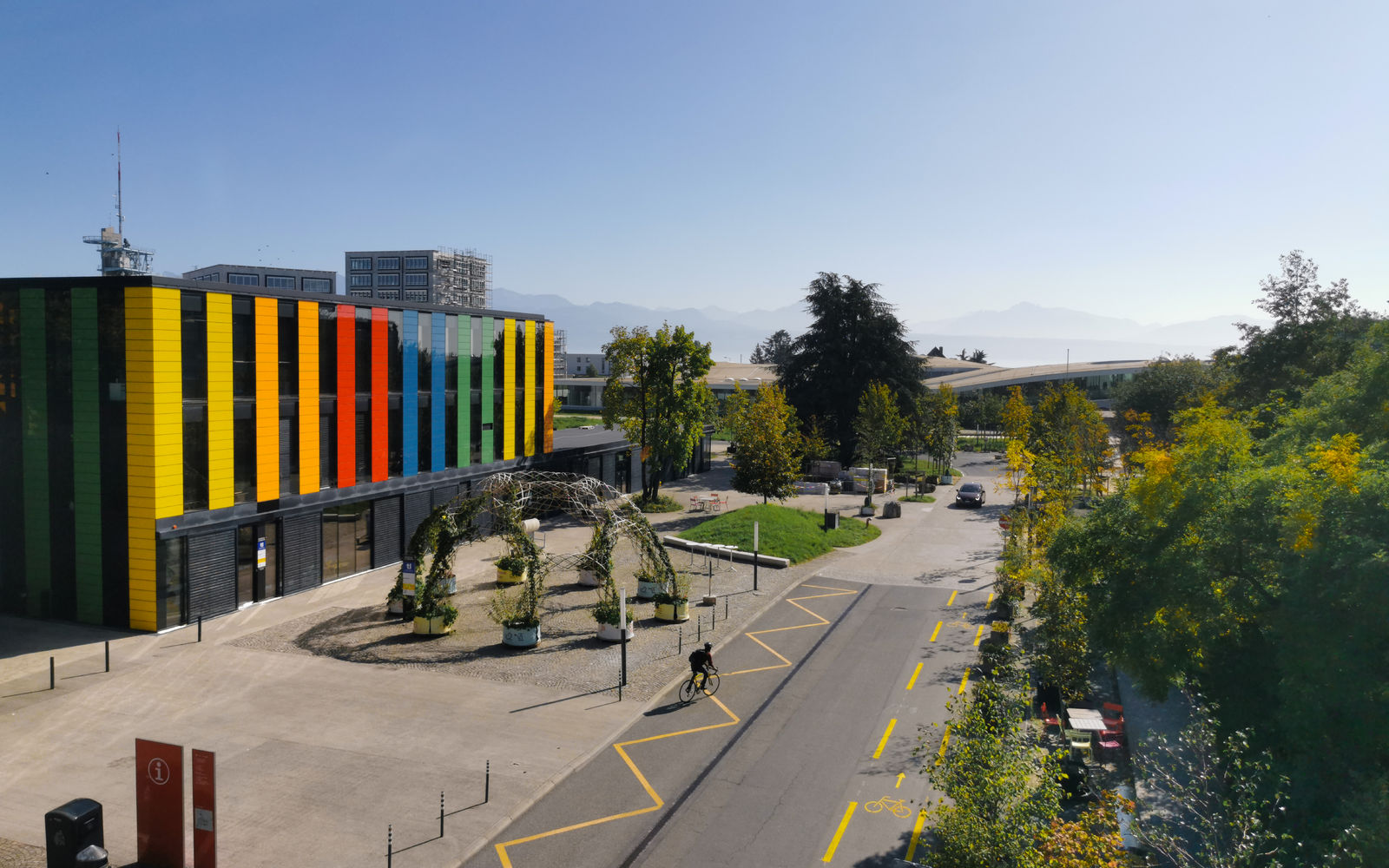
The BamX Pavilion is an ultra-lightweight, ephemeral canopy designed to adapt easily to complex urban areas and promote sustainable green urban development. Conceptually, BamX aims to restore the benefits of trees lost during urban development while minimizing its environmental footprint. The canopy is constructed from an innovative class of deployable cylindrical unit that can be interconnected at woven nodes to form a stable, yet lightweight thick shell. Each deployable unit employs a scissor linkage mechanism to achieve controlled 3D transformations from a compact state. This transformation is accomplished through slender raw bamboo slats that bend and twist, ultimately settling into a state of static equilibrium that minimizes internal stresses. The emerging interwoven network of slats facilitates and guides plant growth, creating a harmonious coexistence of architecture and nature. This project aims to provide a blueprint for eco-friendly structures that can enhance urban space.
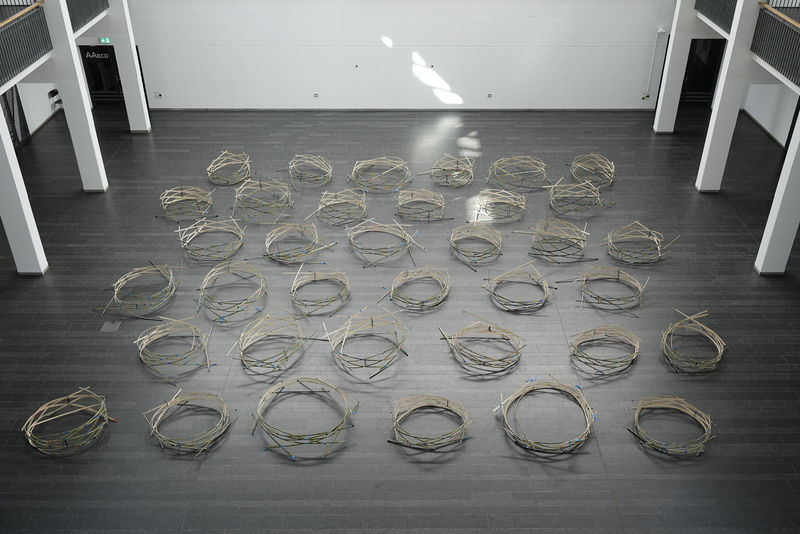
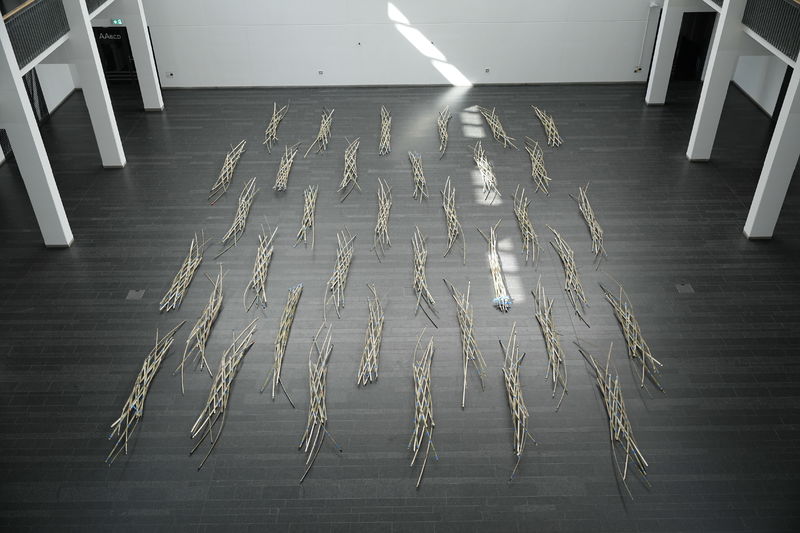
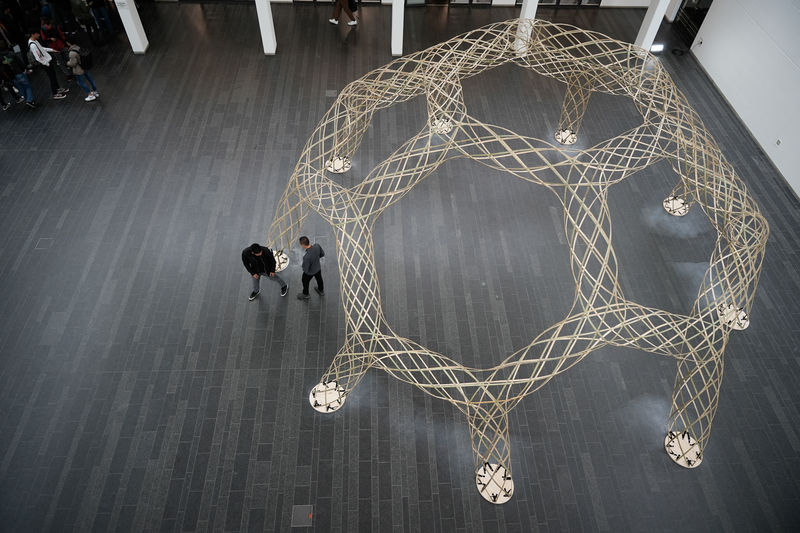
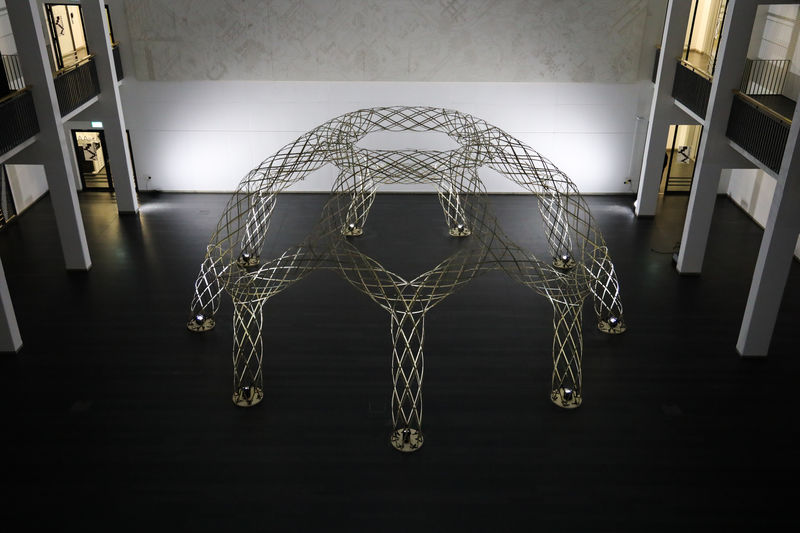
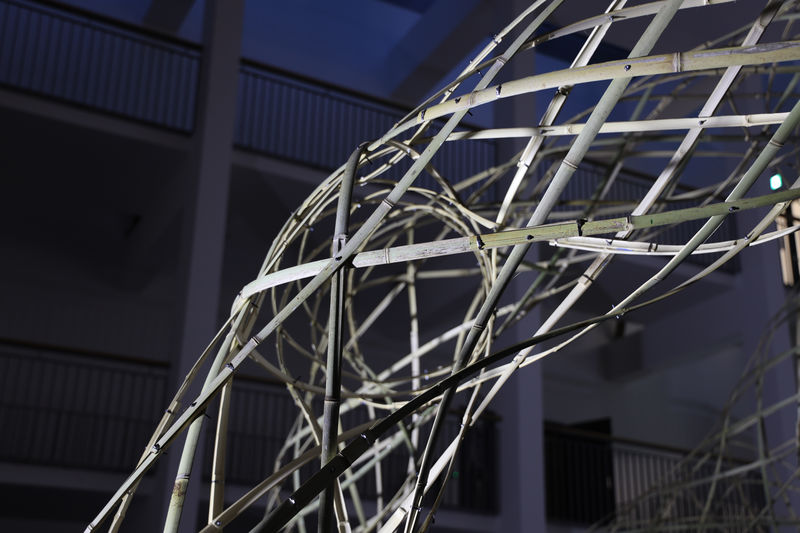
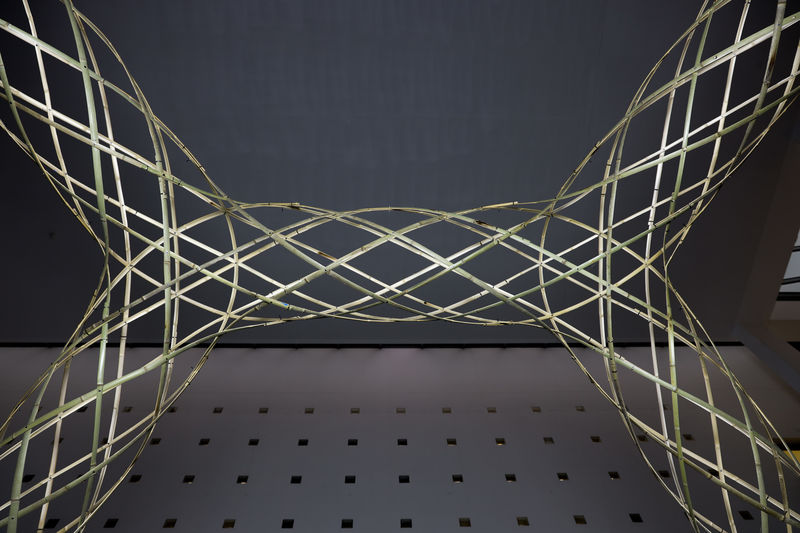
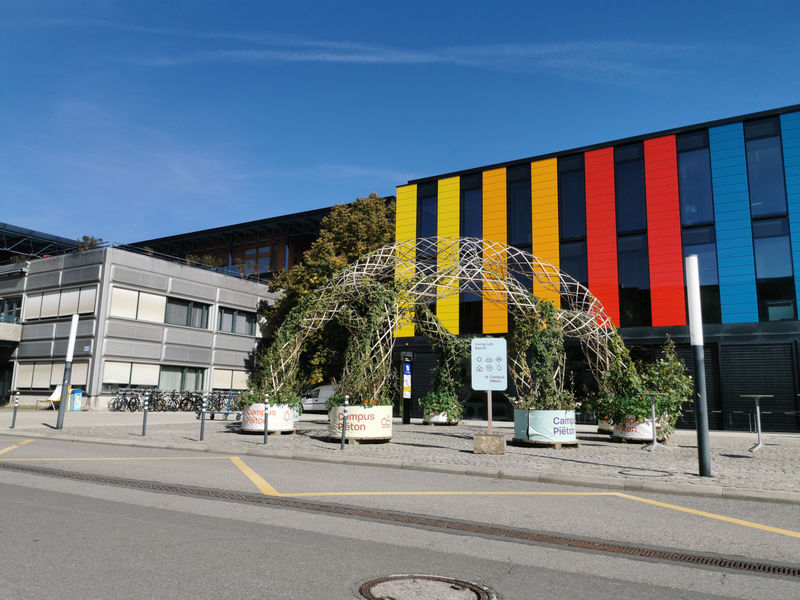
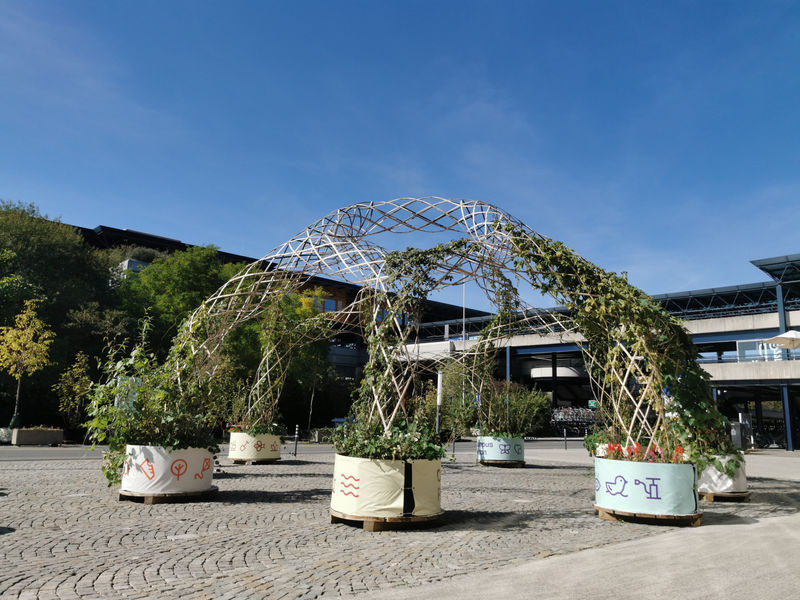
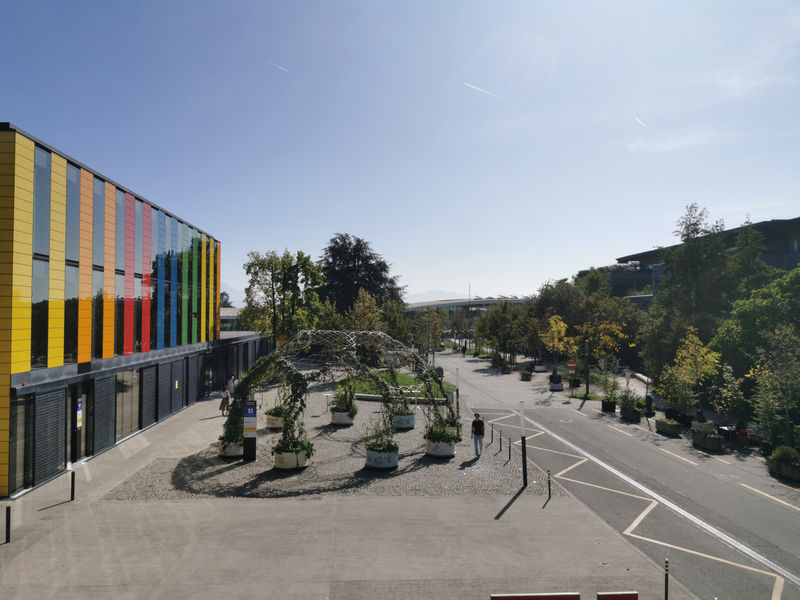

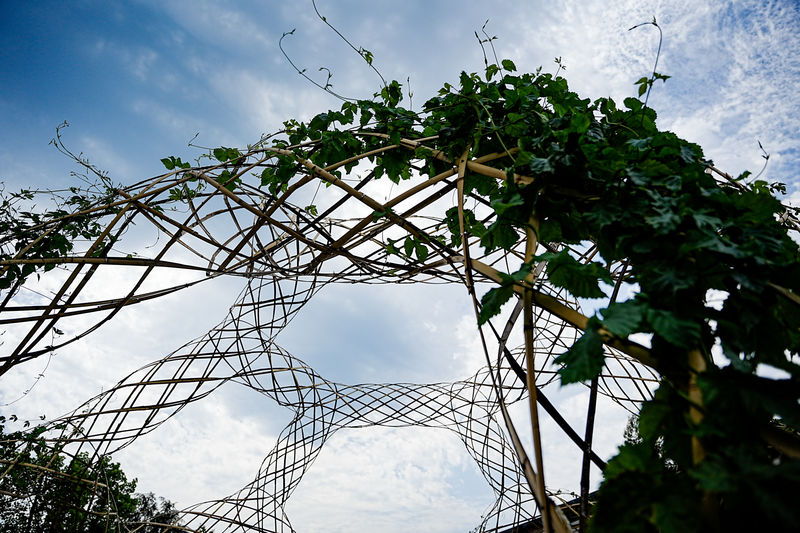
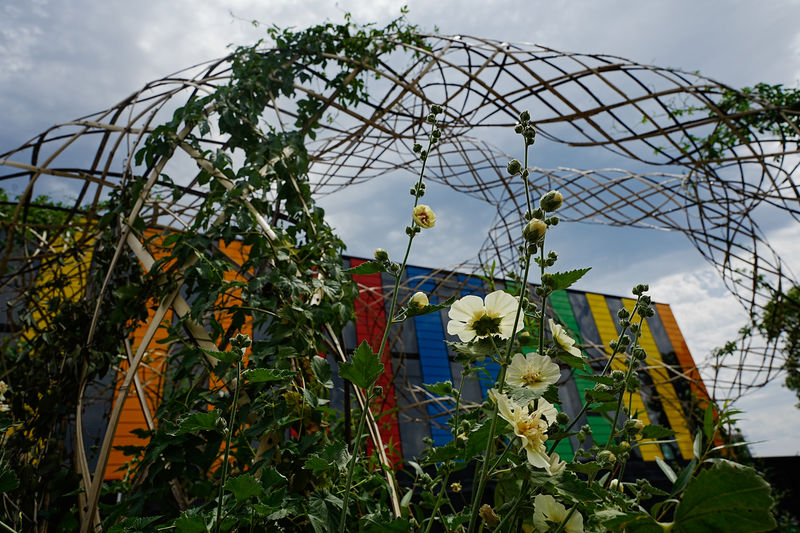
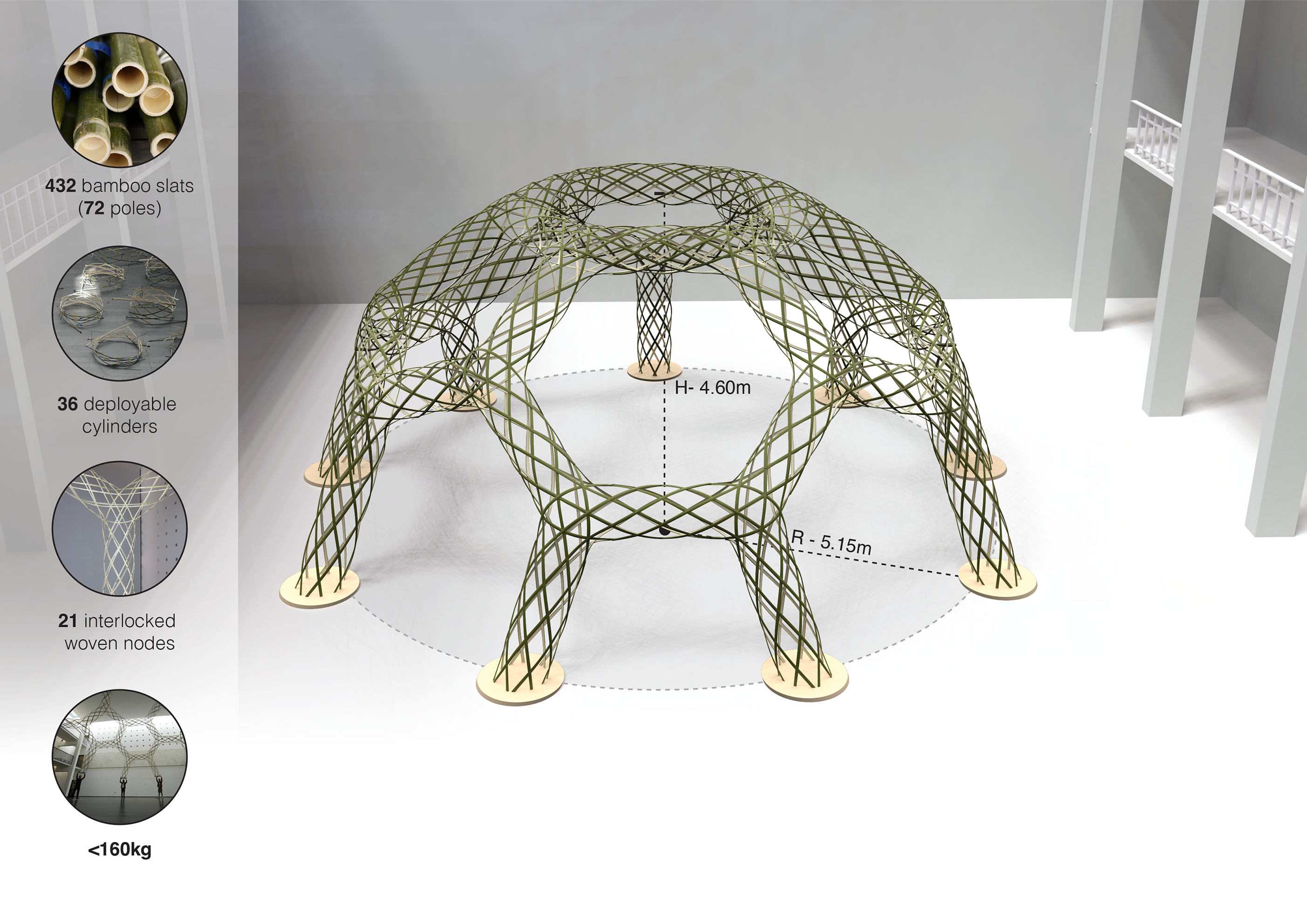
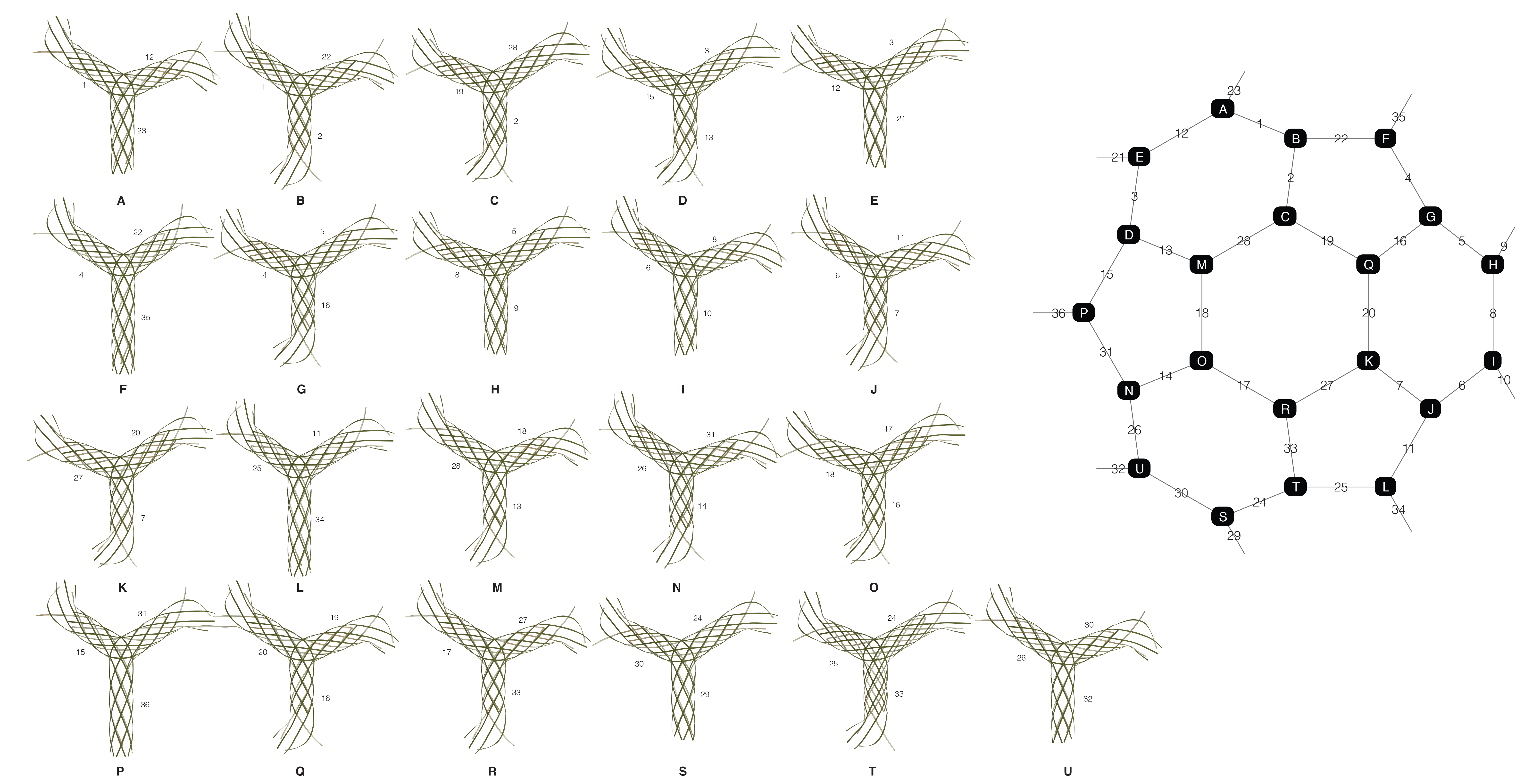

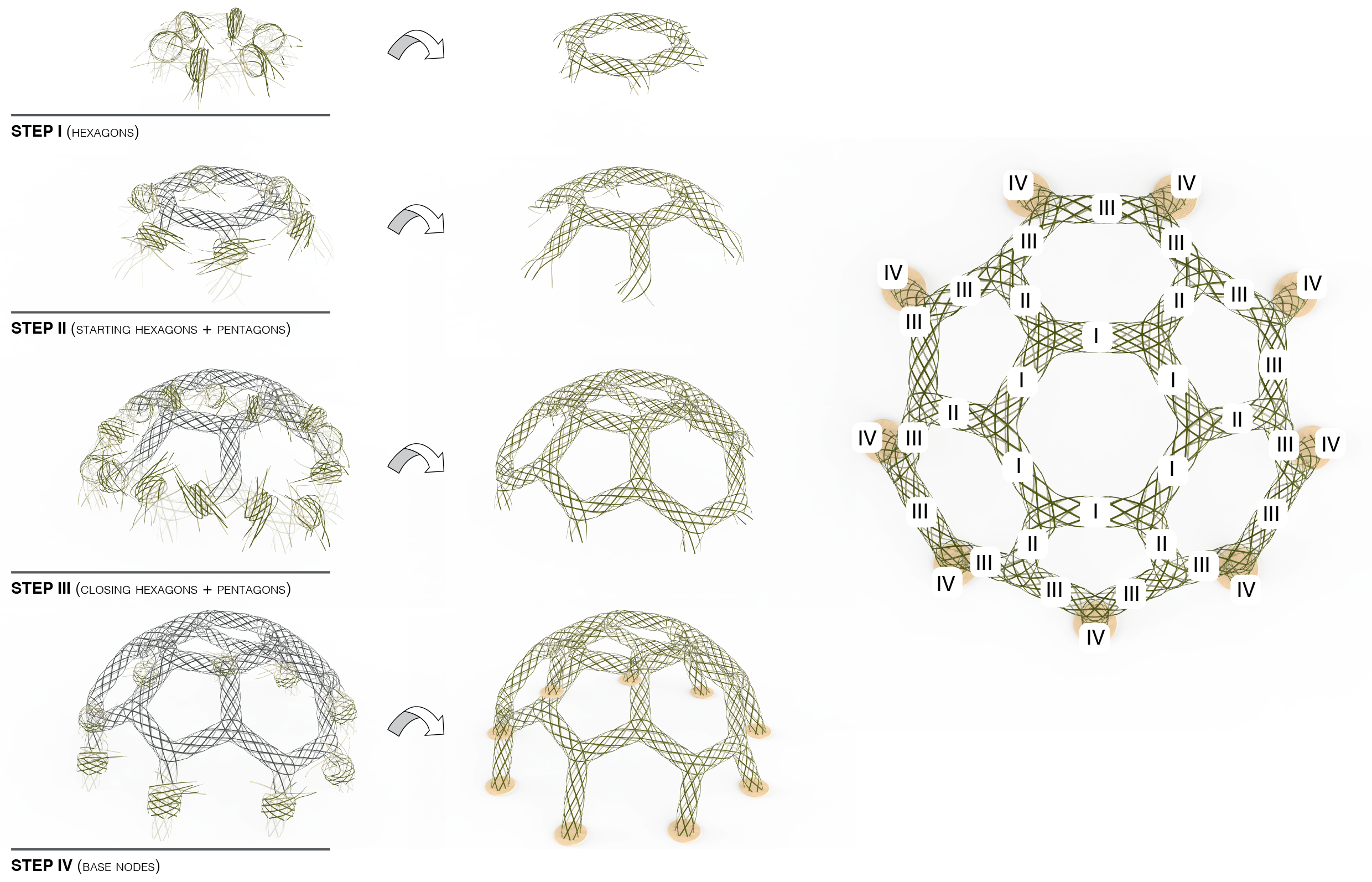
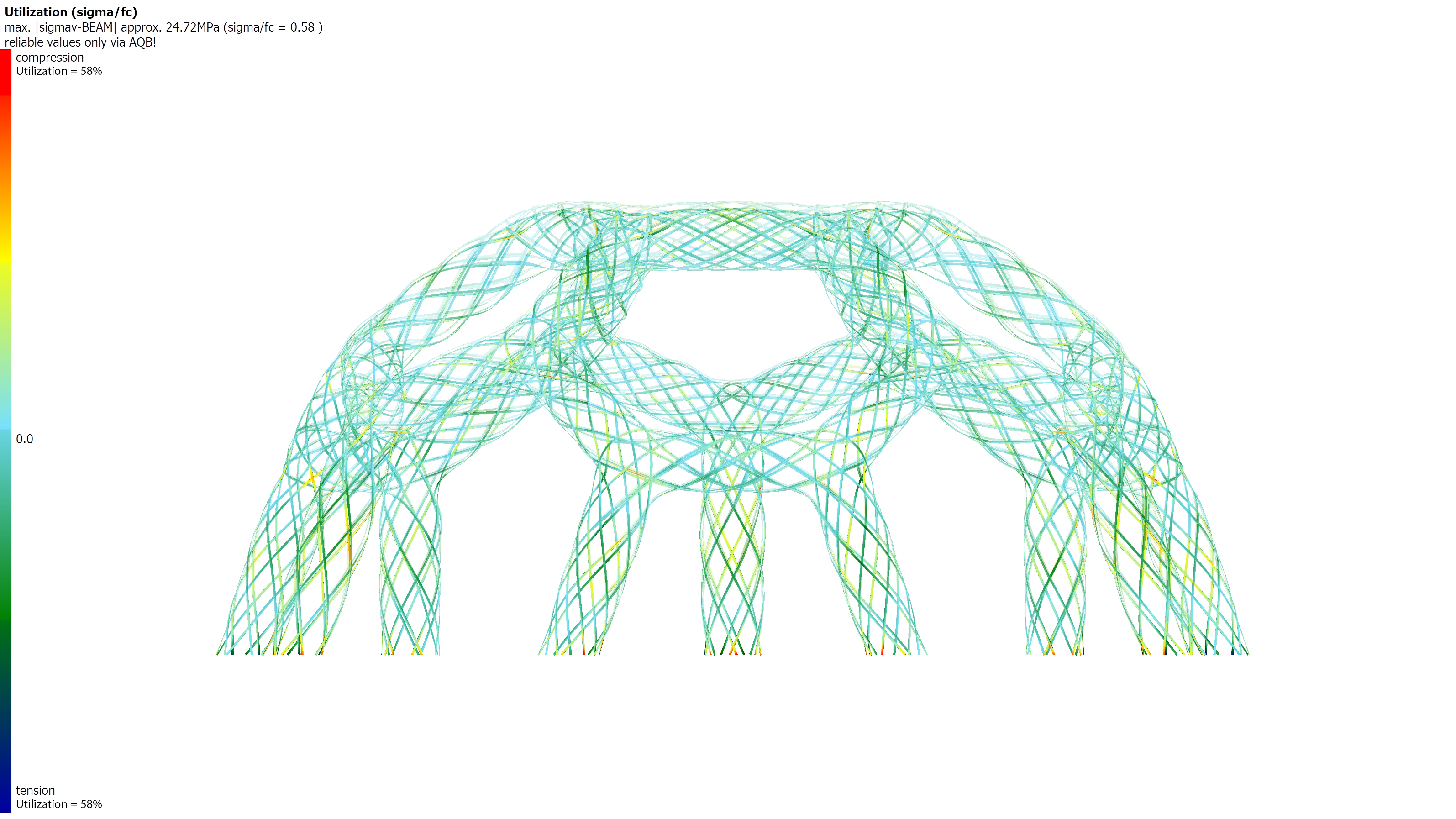
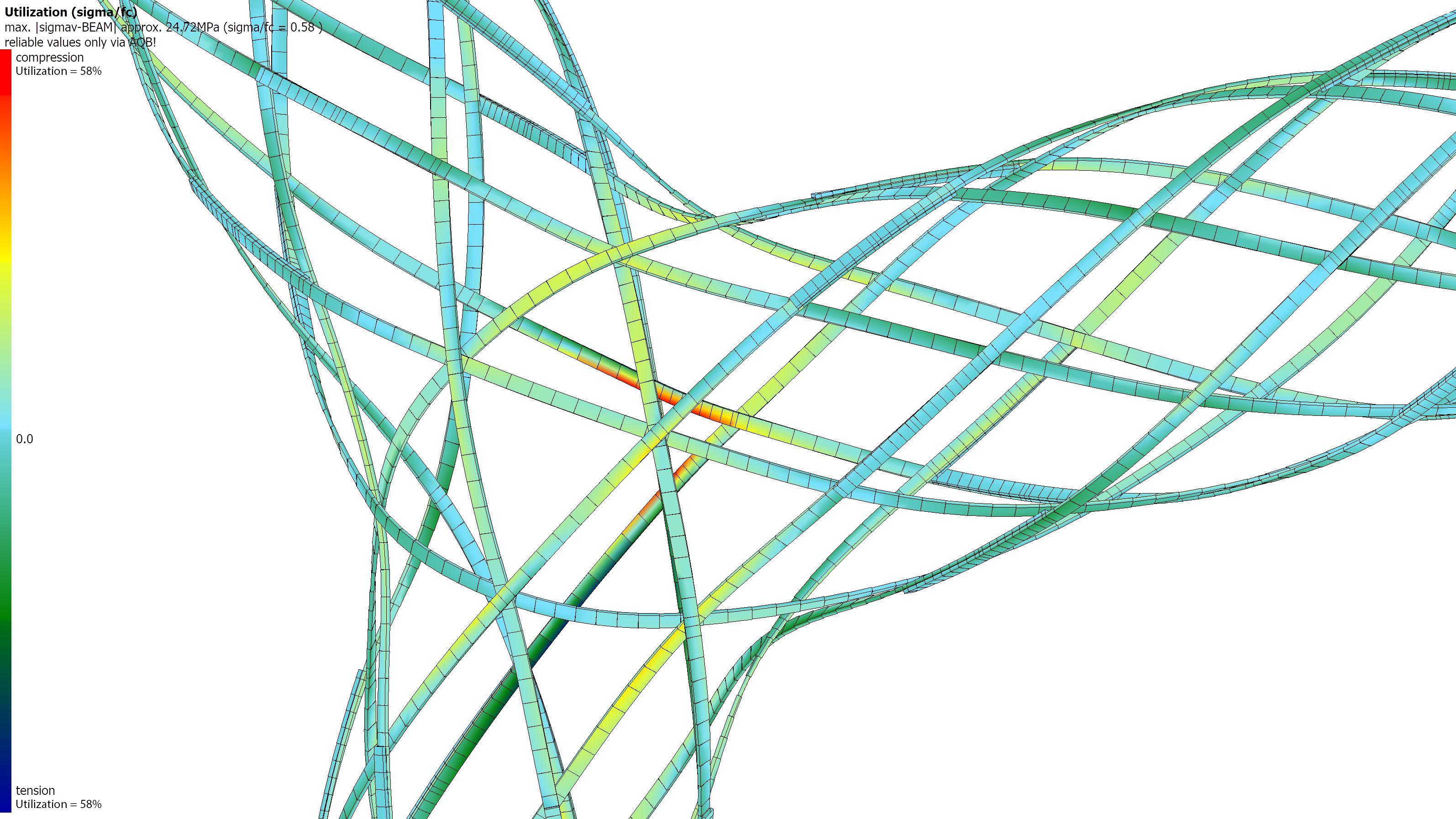
Texte Davos Kriterien (Selbstevaluation)
Gouvernanz
The project's governance acknowledges the significance of technology, not only for designing the pavilion but also for simplifying construction processes and avoiding high-tech requirements. On this basis, non-expert teams managed construction by prioritizing low-tech and quality-driven manufacturing strategies. This approach promotes transparency, inclusivity, and engagement from different members, experts, and stakeholders, aligning the project with local needs, culture, and the environment.
Funktionalität
The project highlights the potential of coupling deployable modules and natural materials in architectural design. The use of deployable units, pre-fabricated off-site and kept compact for transport and storage, simplifies construction. Through an incremental assembly approach, these components are deployed and interconnected without the need for external mechanisms. shaping forces. The stability of the structure relies solely on optimized geometric and topological features.
Umwelt
The structure features plant pods as support systems and utilizes a network of natural-based slat materials inspired by basket weaving to guide plant growth. A significant innovation lies in the project's long-term sustainability. The initial structure is designed to naturally decay over time, enabling the plants to take over as the primary structure. This fosters a synergistic relationship between the canopies and nature, promoting ecological balance and harmony in urban environments.
Wirtschaft
The ultra-lightweight structure aims to minimize the use of material and energy resources for construction. This aligns with the bio-inspired principle of addressing design challenges under the assumption that material is expensive while shape is cheap. The final structure relies solely on a minimum use of raw natural materials and basic hand tools, drastically reducing construction costs. All the material came from 50 bamboo poles of 5 meters and 20 poles of 3 meters.
Vielfalt
Incorporating a green canopy in an urban area where concrete prevails fosters a sense of connection among people. The diaphanous space enclosed by the structure facilitates multiple types of interactions among visitors and shared responsibilities, contributing to both social and spatial cohesion. This type of ephemeral structure helps to cultivate a diverse urban culture that celebrates inclusivity and the richness of varied perspectives.
Kontext
The structure plays a critical role in green urban development, working to restore the advantages of trees that might have been lost in the process of urban expansion, all while maintaining a minimal footprint. In contrast to existing solutions, which often involve significant space requirements and non-sustainable materials, our pavilion offers a sustainable and easily adaptable solution. It can be disassembled and reconfigured in various locations.
Genius Loci
The synergistic relationship between our structure and nature promotes an ecological balance within the urban environment. This aspect generates a positive emotional response in individuals, enabling them to connect profoundly with the structure. The structure aims to provide spaces for community engagement and interaction, which can evolve into venues for cultural events, outdoor performances, and social gatherings, fostering a sense of unity and community spirit.
Schönheit
The aesthetics of our project emerge from the optimized geometry and grid topology of the deployable modules. The network's smoothness and material continuity, constructed from raw natural materials, represent a noteworthy achievement offering a sense of visual delight and harmony. The interplay of natural materials and the evolving beauty of plant growth contributes to a positive aesthetic engagement, enhancing the quality of life for those who interact with the structure.
Eigenschaften
Ort
EPFL
Baukategorie (SIA 102)
Unterricht, Bildung und Forschung
Art der Aufgabe
Neubau
Art des Verfahrens
*
Baukosten in CHF (SIA 416)
7'500
Geschossfläche in m² (SIA 416)
107
Planung
2022 → 2022
Fertigstellung
2022 → 2022
Inbetriebnahme
2022
Projektbeteiligte
Architektur
Architektur
Alison Martin
Bauingenieurwesen
Architektur
Landschaftsarchitektur